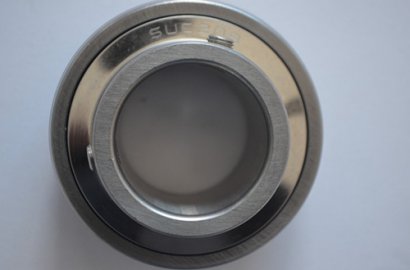
Changzhou Mechanical Processing Summary Forging Process Specification: Steel contains complex carbides (Fe, Cr) 7C3, which dissolve slowly in austenite during heating. At the same time, the thermal conductivity of the steel is poor. Therefore, the heating speed during forging should be slow. Heating temperatures that are too high or staying in high temperature areas for too long can easily cause twinning and damage the performance of the steel.
Because the steel has good hardenability but poor thermal conductivity, the cooling after forging must also be slow, otherwise cracks are prone to occur. If the stop forging temperature is too high, it is easy to produce network carbides, and the coarse network carbides cannot be eliminated in the subsequent annealing process. This material has high deformation resistance, low plasticity, and poor forging performance at high temperatures, and has special requirements for the material and structure of the mold.

In order to better evaluate the noise level of bearings, in actual measurements, vibration values at three points evenly distributed on the front and back of each set of bearings are measured, and the larger test value is taken as the effective vibration value of the bearing.
(1) Low noise lubricating grease can greatly reduce the vibration and noise of bearings. After grease injection, 00% meets the requirements of Z2 group (40 dB), and 98% meets the requirements of Z3 group (38 dB). The product has a certain reserve accuracy. Due to factors that are difficult to avoid, such as the stability of the machine tool, the unevenness of the quality of the grinding wheel and the quality of the grinding wheel dressing during the grinding process, and the unevenness of the replacement and dressing quality of the oil stones and oil stones during the ultra precision process of the channel, the entire process system has certain fluctuations while meeting the precision requirements of the process machining. Therefore, the vibration value data in Table 2 has a certain degree of dispersion.
(2) During the testing process, it was found that 5 sets of bearings had relatively high vibration values during single-sided testing. After washing off the lubricating grease, it was found that one side of the groove had poor ultra precision quality and left grinding wheel marks.
This indicates that there is a certain deviation between the swinging center of the oilstone and the curvature center of the groove after grinding, which affects the surface processing quality of the groove. Based on the amplified sound signal of the speaker, it was determined that there were 5 sets with obvious abnormal sounds. Observing the lubricating grease inside, foreign objects were found to have invaded, and the ultra precision quality of the channel was not high.
(3) Through 2000 sets of trial production using a new process on 6204E, the final vibration value test results have verified the feasibility and effectiveness of this process, accumulating valuable production experience for producing low-noise bearings.
(4) Improving the positioning accuracy of the end face and outer diameter provides a good process benchmark for grinding and ultra precision of bearing grooves, which is conducive to producing good surface quality of the grooves. Adjusting the ultra precision process parameters of the channel to form a uniform and delicate strip like pattern on its surface can effectively reduce the vibration and noise levels of the bearing.
(5) Improving the assembly quality of bearings, strictly implementing process specifications, and eliminating scratches and scratches on the working surface of bearings are also effective measures to reduce bearing vibration and noise.